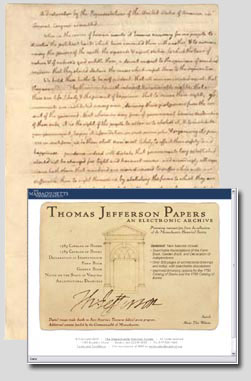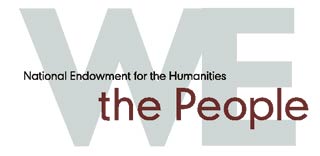Declaration of Independence, manuscript copy by Thomas Jefferson [1776]
Pages 1 and 2: 8 1/8 in. x 12 11/16 in. Pages 3 and 4: 8 1/8 in. x 3 3/16 in.

Online display of manuscript and transcription.
In His Own Words
Having taken into consideration the edits of the committee to his draft version of the Declaration, Jefferson brings a clean copy to the rest of Congress to hear and consider. Congress proceeds to make a number of changes to the document which Jefferson does not protest. Once the approved version is sent to the printers, however, Jefferson writes to a number of friends and sends to them a copy of the unedited version, which he still prefers.
Questions to Consider
1. Compare Jefferson's manuscript with the Dunlap printed version. What changes did Congress make before approving the declaration? [ Click here to view the Dunlap printing of the Declaration. ]
2. What Jefferson called ?the original rough draft? of the Declaration, on which all Congress' edits were made, has been lost. Why is it useful to have this copy, which Jefferson made later?
3. Do you prefer Jefferson's version or Congress' approved version? Why? Select particular examples from the text to support your statement.
Further Exploration
4. Did Jefferson often keep extra copies of his writing? How? Why might he want a second copy of a letter or other transaction?
5. What language in the Declaration resembles the language from the Virginia Legislature's resolution?
Funding from the Massachusetts Society of the Cincinnati supported enhancements to this website.



